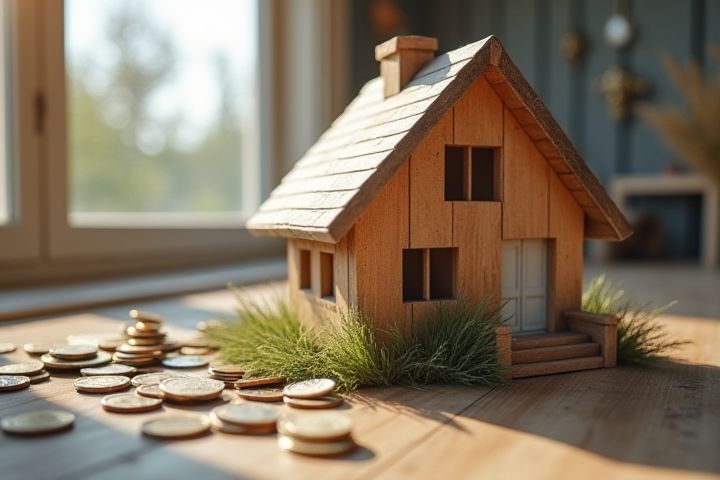
Research your local real estate market to identify neighborhoods with rising property values, ensuring your investment yields a high return. Invest in a thorough home inspection to uncover potential structural or hidden issues that could complicate renovations or reduce your profit margin. Focus on cost-effective improvements that enhance curb appeal, such as landscaping, painting, and updated fixtures, to attract buyers quickly. Keep a detailed budget to track renovation expenses and avoid overspending, ensuring your flip stays profitable. Finally, stage the home effectively, presenting it in the best light to make an inviting atmosphere that resonates with prospective buyers during showings.
What Are House Flipping Tips
Location analysis
Location analysis is crucial for successful house flipping, as it directly impacts property value and resale potential. Research neighborhoods with a median home price increase of at least 5% annually, ensuring you tap into areas with promising growth. Proximity to amenities like schools, shopping centers, and public transport can enhance attractiveness, so prioritize locations within a 1-mile radius of these facilities. Utilize tools like Zillow or Redfin to analyze local market trends, and evaluate crime rates and community engagement to ensure a sound investment.
Budget setting
Establish a clear budget before purchasing a property for flipping, ideally setting aside 10-20% of your total budget as a contingency fund for unexpected expenses. Ensure your budget includes not only the purchase price but also renovation costs, which can range from $10,000 to $50,000 depending on the property's condition. You should account for carrying costs, including property taxes, utilities, and insurance, which can accumulate quickly, often amounting to several thousand dollars. Regularly track your spending against the budget throughout the project, as staying within your financial limits is crucial for maximizing profit margins when selling the flipped house.
Thorough inspections
Thorough inspections are crucial in the house flipping process, as they can uncover hidden issues that may significantly impact renovation costs and resale value. Prior to purchasing a property, hire a qualified home inspector to evaluate critical areas such as the roof, plumbing, electrical systems, and foundation. This investment typically ranges from $300 to $500, but can save you thousands in unexpected repairs. By addressing any significant findings early, you can negotiate a better purchase price or adjust your renovation budget to ensure a profitable flip.
Market research
Conduct thorough market research by analyzing local real estate trends, focusing on neighborhoods with rising property values, ideally experiencing at least a 5-10% annual increase. Utilize online tools and resources such as Zillow or Redfin to gauge property history, days on the market, and average sale prices. Attend local open houses and auctions to better understand buyer preferences and current market demands. Engage with real estate professionals in your area to gain insights into upcoming developments or shifts that could influence property value.
Renovation planning
Start your house flipping journey by developing a detailed renovation plan that outlines your budget, timelines, and specific tasks for each area of the property. Prioritize high-return renovations, such as kitchen updates and bathroom remodels, which can yield returns of 70% to 90% on your investment. Utilize a reliable project management tool to track progress and ensure efficient workflow, as staying on schedule can save you up to 20% on costs due to prolonged labor. Lastly, always obtain necessary permits and adhere to local codes to avoid costly fines and delays that could derail your project.
Cost management
To maximize profits in house flipping, meticulous cost management is essential. Prioritize your budget by allocating approximately 30-40% for purchasing the property, 20-30% for renovations, and the remaining 30-50% for holding and selling expenses. Implement strategic purchasing by sourcing materials from wholesale suppliers and local auctions, which can save up to 50% on renovation costs. Lastly, keep unexpected expenses in check by maintaining a contingency fund of about 10-15% of your total budget, ensuring you can navigate unforeseen issues without diminishing your profit margin.
Skilled contractors
Hiring skilled contractors can significantly elevate your house flipping project. Invest time in vetting professionals with proven experience, checking online reviews, and requesting references from previous clients. Building a rapport with reliable contractors enhances communication and ensures that your specific vision for the property is executed flawlessly. Prioritize contractors who provide detailed estimates and timelines, as this transparency helps you stay on budget and schedule throughout the flipping process.
Timeline management
Effective timeline management is crucial in house flipping to ensure profitability and efficiency, typically aiming for a turnaround of 3 to 6 months. Start with a detailed project schedule that outlines each phase, from purchase to renovation and sale, allocating specific timeframes for each task to prevent delays. Utilize project management tools or apps to track progress, enabling you to adapt to unforeseen issues without derailing your timeline. Prioritizing clear communication with contractors and suppliers helps mitigate scheduling conflicts, ensuring your project stays on track and within budget.
Quality materials
Using high-quality materials in house flipping can significantly enhance the property's value and appeal. Invest in durable flooring options, such as engineered hardwood or luxury vinyl plank, which not only look appealing but also withstand wear and tear. Opt for energy-efficient windows and doors, which can reduce energy costs and attract eco-conscious buyers, raising the potential sale price by up to 10%. Lastly, select premium fixtures for kitchens and bathrooms, as these high-return areas can yield a return on investment as high as 70% when upgraded with quality materials.
Exit strategy
An effective exit strategy is crucial for successful house flipping, highlighting the importance of analyzing your market and pricing your property competitively. Consider selling through multiple channels, such as traditional listings, real estate auctions, or online platforms, to maximize exposure and attract diverse buyers. Keep your target demographic in mind, tailoring renovations and marketing efforts to appeal to potential buyers, whether they are families, young professionals, or investors. Establish a clear timeline for your flip, ensuring that your exit plan aligns with your financial goals and minimizes holding costs to achieve optimum profitability.
